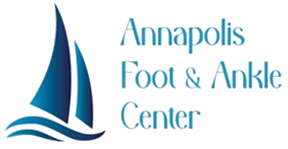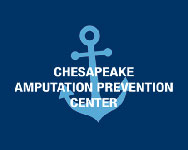
Imagine trying to walk, work, or enjoy your favorite activities while dealing with chronic foot pain. For millions of Americans, this scenario is an unfortunate daily reality that prevents them from fully engaging in life. Even minor aches, pains, or injuries can make everyday movements uncomfortable.
Our Annapolis, MD podiatry team has seen firsthand how foot and ankle problems disrupt lives. Many of these issues can be prevented with proper care and a basic understanding of the anatomy involved. By taking a closer look at the intricate structures that make up your feet and ankles, you'll be better prepared to keep them healthy. If chronic pain or deformities persist, consulting a reconstructive foot and ankle surgery podiatrist can help restore comfort, stability, and mobility.
In this article, we'll explore the key components of the foot and ankle, discuss common problems that can develop, and provide guidance on when it's time to visit a foot doctor for an evaluation. Armed with this knowledge, you can take proactive steps to support your foot health.
Table of Contents
The 26 Bones That Provide Structure and Support
Your feet and ankles are made up of 26 bones each. These include:
- Talus. This bone supports the leg bones (tibia and fibula) to form the ankle joint.
- Calcaneus. Also known as the heel bone, the calcaneus is the largest bone in the foot. It helps absorb shock.
- Tarsals. These are the five irregular-shaped bones (cuboid, navicular, and three cuneiforms) that form the arch of the foot.
- Metatarsals. These five long bones connect the tarsals to the toes. They bear your weight when standing.
- Phalanges. These are the 14 small bones that make up the toes. The big toe has two phalanges, while the other toes have three each.
Together, these bones provide the structure and support needed for standing, walking, and running. They are held together by a complex network of ligaments, tendons, and muscles.
Any injury, deformity, or disease affecting the bones of the foot and ankle can lead to pain and mobility issues like fractures, bunions, flat feet, high arches, and rheumatoid arthritis of the feet and ankles. An Annapolis foot and ankle specialist can diagnose and treat these bony abnormalities.
Tendons and Ligaments Enable Movement
Tendons are thick cords of tissue that connect muscles to bones. In the foot and ankle, important tendons include:
- Achilles tendon. Connecting the calf muscle to the heel bone, this is the largest and strongest tendon in the body. It enables you to walk, run, and jump.
- Posterior tibial tendon. This tendon runs along the inside of the ankle and helps support the foot's arch.
- Anterior tibial tendon. Located at the front of the ankle, this tendon allows you to flex your foot upward.
- Peroneal tendons. These two tendons run along the outer ankle bone and stabilize the foot and ankle.
Ligaments are fibrous tissues that connect bones to other bones. Key ligaments in the foot and ankle include:
- Deltoid ligament. Found on the inside of the ankle, it connects the tibia, talus, calcaneus and navicular to stabilize the joint.
- Lateral collateral ligaments. These three ligaments on the outside of the ankle prevent it from turning inward.
- Metatarsal ligaments. These are the bands of tissue that connect and stabilize the metatarsal bones.
Problems with the tendons and ligaments, such as tears, inflammation, or ruptures, can cause significant foot and ankle pain. Tendonitis, ankle sprains, and fallen arches are some common ailments. If you suspect a tendon or ligament injury, promptly visit an Annapolis podiatrist for proper treatment.
Muscles Power Your Every Step
Over 20 muscles work together to move your foot and ankle, including:
- Gastrocnemius and soleus. These calf muscles attach to the Achilles tendon to plantarflex the foot (point toes).
- Tibialis anterior. Running along the shin, this muscle dorsiflexes the foot (flexes it upward).
- Tibialis posterior. This deep calf muscle supports the arch and inverts the foot (turns it inward).
- Peroneus longus and brevis. These muscles on the outside of the lower leg evert the foot (turn it outward).
- Intrinsic foot muscles. These small muscles originating and inserting in the foot assist with fine motor control.
Foot and ankle muscles are prone to strains and cramps, especially in athletes or those who engage in repetitive motions. Overuse, dehydration, and nutrient deficiencies can contribute to muscular issues. Regular stretching, proper footwear, and cross-training help keep these muscles healthy.
When to Seek Help From an Annapolis Podiatrist
While occasional aches and pains in the feet and ankles are common, persistent discomfort warrants a visit to a foot care clinic. Schedule an appointment with an Annapolis podiatry practice if you experience:
- Severe pain, especially if it comes on suddenly
- Inability to bear weight on your foot or ankle
- Pain that interferes with sleep or daily activities
- Visible deformity, swelling, or discoloration
- Flare-ups of arthritis or gout
- Painful bunions, corns, or calluses
- Toenail problems like ingrown nails or fungal infections
- Heel pain, arch pain, or pain in the ball of the foot
- Recurrent ankle sprains or instability
- Slow-healing sores or wounds, a major concern for diabetics
At our Annapolis podiatry practice, we take a comprehensive approach to evaluating, diagnosing and treating foot and ankle problems. We'll assess your medical history, examine your feet, and order imaging tests to get to the root of your issue. From there, we'll create a personalized treatment plan to relieve pain and restore function.
Partnering With Your Podiatrist for Lifelong Foot Health
Your feet are complex structures that undergird your entire body. By understanding the anatomy of the foot and ankle, you're better equipped to identify problems early and determine when to seek professional care.
At Annapolis Foot & Ankle Center, we're dedicated to helping our patients maintain optimal foot health through every stage of life. Whether you're dealing with a sports injury, struggling with chronic foot pain, or hoping to prevent future problems, we're here to help. Our skilled podiatrist will work with you to develop a holistic plan to keep you active and pain-free.






